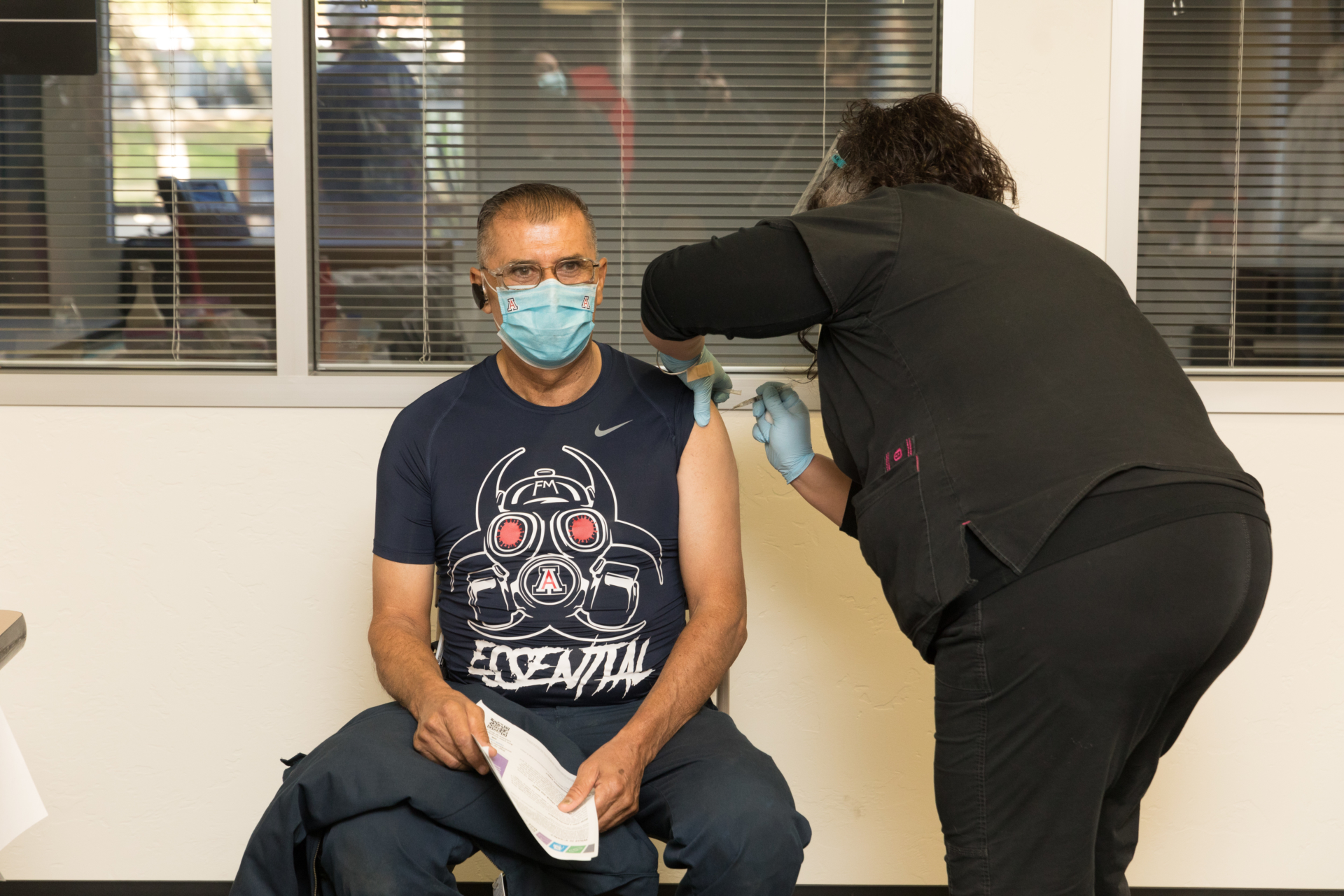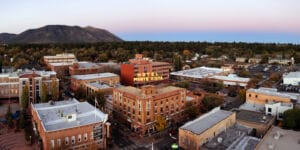The University of Arizona will remain in stage one of its reentry plan this week and next week, with only essential UArizona classes meeting in person and the rest held online.
“As we all know, the surge of COVID-19 infections has continued, and Arizona remains a hot spot – the hottest spot in the nation,” UArizona President Robert C. Robbins said in his weekly virtual briefing on the university’s status.
He pointed to data reported by The Washington Post on Sunday showing that Arizona has the highest infection rate in the country, with a rolling seven-day average of 100 daily new reported cases of COVID-19 per 100,000 residents.
The university began last week to serve as a point of distribution for COVID-19 vaccine in Pima County and has since administered 1,296 shots, Robbins said. An additional 800 shots are expected to be given on Monday and also on Tuesday, he said.
Vaccinations are offered at two locations on main campus: a drive-through site on the University of Arizona Mall and a walk-through clinic in Room 129 of the Ina E. Gittings Building, 1737 E. University Blvd. A map is available on the university’s COVID-19 vaccination site information webpage. Appointments are required for both locations.
Robbins stressed that the county – not the university – is responsible for scheduling vaccination appointments. Information on how to register is available on the Pima County Health Department website.
“We have communicated to the university community that Pima County has developed an algorithm for allocation of these vaccines, and the county will ensure that this process is done in a fair and equitable manner,” he said. “Fewer than one-third of the doses coming to the university POD will be allocated to our faculty and staff.”
Pima County remains in priority Phase 1B of its vaccine distribution plan, which includes people 75 and older, child care providers, K-12 and higher education employees, and those working in protective service occupations, including law enforcement, corrections, firefighters and other emergency response staff.
The university also continues to rigorously test for COVID-19, with students living on campus required to get tested twice a week. Between Jan. 18 and 24, the university administered 8,337 COVID-19 tests with168 positives, for a positivity rate just over 2% – slightly higher than last week’s rate of 1.79% but still under the target threshold of 5%, Robbins said.
As of Jan. 22, there were 40 students in isolation dorm beds, which are provided for dorm residents who test positive for the virus. That leaves 556 such beds available.
Although COVID-19 vaccinations have begun, there is still a long way to go, and Robbins stressed the importance of continuing to follow basic public health guidance as UArizona classes continue.
“Our way out of this surge here in Arizona and, indeed, nationwide is clear,” he said. “We must continue to be vigilant. Recommit to basic public health practices of covering your face everywhere you go, keeping your distance from as many people as possible, and continue to sanitize your hands – wash your hands. … The vaccine clearly will




